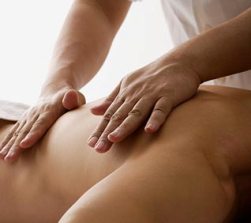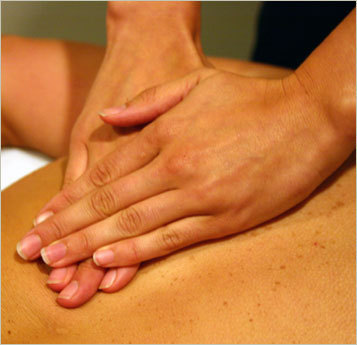
Michael's Hands
Chinese
| By: Michael Manion | Viewed: 12/28/2025 |
Topics/Keywords: #ChineseMassage | Page Views: 6773 |
| All about Chinese Massage. | |||
What is traditional Chinese massage?
Two types of traditional Chinese massage exist:
- Tui Na (推拿) which focuses on pushing, stretching and kneading the muscle and
- Zhi Ya (指壓) which focuses on pinching and pressing at acupressure points. Both are based on principles from Traditional Chinese Medicine.
Tui Na

Tui Na is used to protect health and build up body immunity, so that disease can be stopped in its beginnings. It acts as a preventative medical measure, without any side effects. Tui Na can sometimes be mistaken for acupressure, since it makes use of the same energy meridians that course over the body.
Tui Na uses techniques and manipulations to stimulate acupuncture points or other parts of the body surface so as to correct physiological imbalances of the body and achieve curative effects. The effect of Tui Na is to disperse and smooth obstructions whilst checking and restraining hyperfunction. Tui Na is an important part of Traditional Chinese Medicine (TCM), which also encompasses acupuncture, herbal medicine, nutrition and exercise to treat the whole body, mind and spirit.
In summary, Tui Na rectifies anatomical anomalies, alters the inner energy state of the biological system and adjusts the bio-information of the body. For soft tissue injuries, Tui Na relaxes muscles and tendons and promotes smooth passage of the channels. It also promotes blood circulation and removes blood stasis.
Tui Na techniques and manipulations are rigorous. Patients of Tui Na treatments can be seated or may be laid on a treatment couch, whichever is the most comfortable position for both patient and practitioner. Tui Na treatments are usually applied on top of loose clothing, i.e. rarely on bare skin, although herbal rubs can be used in conjunction with a Tui Na treatment.
Tui Na has no adverse side effects, although because it can be a powerful treatment in terms of re-adjusting the functions of the body, some patients may see an increase in frequency of visits to the bathroom, or may feel the build up and release of pressure throughout the body, or may feel slightly sedated immediately after treatment or may develop slight bruising (as blocked energy gets released). A lot depends on the patient and the nature and longevity of the disease being treated. The effects of a typical Tui Na treatment, if it hasn’t completely cleared any obstruction, can last up to 3 -4 days.
Tui Na may be applied to treat many disorders from soft tissue injuries to many other kinds of ailments such as rheumatic pain, tiredness, lack of energy and any symptoms caused by stress or emotional problems. Tui Na is even used for cosmetic purposes such as weight loss and an alternative to Botox! Tui Na is especially good for adults, infants, sports medicine, general health care for the elderly, rehabilitation and orthopedics, from which many other complementary therapies have evolved as ‘specialist’ therapies.
Tui Na works on the same basic theory as other TCM techniques : “Injury or disease causes blockages in the channels of the body. Blockages cause pain.”
Zhi Ya

Zhi Ya is a form of Chinese massage based on acupressure. It is similar to Tui Na massage except it focuses more on pinching and pressing at acupressure points.
©1998-2025 Michael Manion
All Rights Reserved
